Five years ago, the Nashville Predators were near the bottom of the league in cap spending; the closest they have come to the cap limit was this season when they spent $80.7 million of an available $81.5 million. That may seem close to the limit, but the team is still in the bottom half of the NHL. For a team that makes the playoffs almost annually and has exceptional ticket sales, it seems likely that management will continue to invest in their players. If so, we can map out what the next few seasons will look like for the Predators, given the flat cap.
The Global Pandemic
Since the NHL implemented the salary cap at $39 million for the 2005-06 season, the cap has risen almost every year. For the first few seasons, it grew at a rate of approximately 10 percent per year. Over time, though, that rate has fluctuated, but the overall curve is flattening and the most recent increase has been in the 2-4 percent range. Before the global pandemic, the salary cap was projected to be between $84-88 million for the 2020-21 season, but with limited games and fewer to no fans in attendance, that never happened. Instead, the new Collective Bargaining Agreement accounted for the significant decrease in cash flow, which meant the cap would stay flat for the coming seasons as the league — and the world — battled and recovered from the COVID-19 pandemic.
Related: NHL “Flat Salary Cap” Will Lead to Bumpy Road
A new mega-TV deal could have pushed the cap limit upwards again, with year-over-year increases of $5-10 million as opposed to the $1-4 million we saw before the pandemic. However, with the league in a financial hole, that extra income from TV deals (in addition to the Seattle expansion fees) will be used to cover losses around the league. It will take time for the NHL to get back into the black, but having fans (safely) back in the stands during the playoffs was a big step forward. The NHL relies on gate-driven revenue, so making sure arenas are full in 2021-22 should be the priority.
Like most teams, the Predators will have to adjust to the new circumstances. They recently signed Roman Josi and Ryan Ellis to long-term extensions. Ellis signed an eight-year deal with an average annual value (AAV) of $6.25 million, which kicked in ahead of the 2019-20 season, and Josi signed his own eight-year deal with an AAV of $9.06 million, starting ahead of the 2020-21 season. Both deals made sense when the cap was supposed to go up; the salaries are fair for two top-tier defencemen in their prime, and as they age the cap was expected to increase, meaning their cap hit would be reduced over time. Unfortunately, these contracts aren’t as team-friendly under a flat cap, especially considering the other big-ticket deals that count against the team’s cap limit.
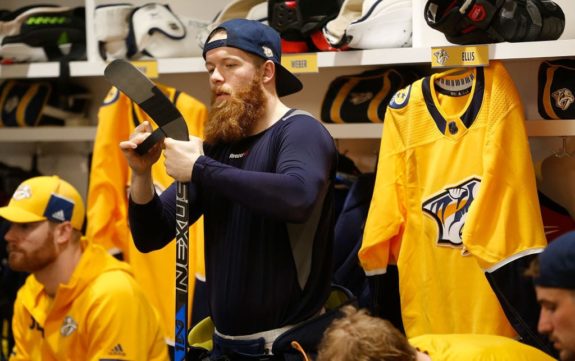
With the cap set to stay flat for what could be the next five seasons, the Predators will have to plan not just for next season but take into account that any contract signed now won’t eat up less of their cap space over that time. This also means that players will be looking for contracts that expire when the cap is set to rise again, while teams will have to be more frugal in their short-term spending because any mistake made now won’t be diminished by a rising cap.
Managing the Free Agent Market
Nashville’s 2021 unrestricted free agents (UFAs) won’t be a key factor for Predators management, although Mikael Granlund could return on a similar deal or with a slightly higher cap hit than the $3.75 million he was making this season. The team has room for that in the budget, especially after Victor Arvidsson was moved for draft picks. However, if Granlund is re-signed, he will likely be the only real “acquisition” of the offseason unless the Predators plan to pawn off one of their big contracts (Ryan Johansen or Matt Duchene) to the Seattle Kraken, for a price, of course.
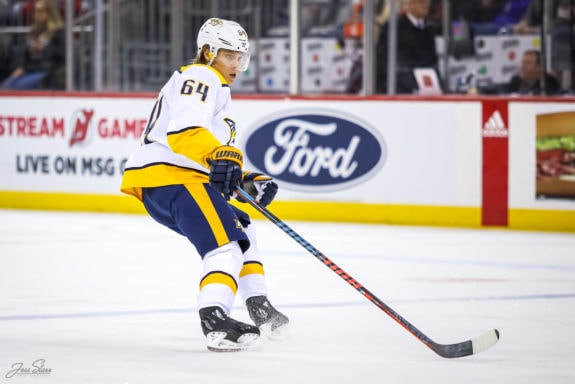
Contracts for their restricted free agents (RFAs) shouldn’t break the bank either, but the Predators will probably be close to the salary cap when the ink is dry. Juuse Saros is due for a substantial raise, but that should be a long-term deal to solidify Nashville’s goaltending while the cap remains flat. Other RFAs, like Dante Fabbro and Luke Kunin, won’t cost the team too much, at least not in the short term.
That brings us to the money that will be tied up in extending the 2022 free agents. Filip Forsberg and Mattias Ekholm have one year left on their deals before becoming UFAs in the summer of 2022, and are due for a well-earned raise. Forsberg’s deal is worth $6 million against the cap, so an increase to the $7-7.5 million range won’t hurt that much. However, Ekholm will likely be looking for something similar, which would be double his current $3.75 million cap hit. To make that fit, the Predators will have to add players on their entry-level contract (ELCs) to the roster and hope they make an impact.
Looking Into the Future
Assuming there are no drastic changes to the team, the Predators have two options: they move at least one big-ticket name — either a center to Seattle or a player like Ekholm via trade or free agency — or they keep the core of the roster together. The former would be a lot easier to manage long term, but here’s a peek at both outlooks:
Moving Money Out
Depending on the contract moved out, the team moves in two drastically different directions. If the contract is Ekholm’s new deal, and/or a trade involving Forsberg or Ellis, then the team is moving towards a reset. It seems like a lot of the fan base is ready for this, as the slow start to the 2019-20 season provided a bit of an appetizer there. However, with the turnaround, management seems to be set on resetting on the fly, and continuing to compete. That makes it more likely that a key contributor on a big contract is not moved out, and that we should be preparing for one of Johansen or Duchene to be plying their trade elsewhere next season.
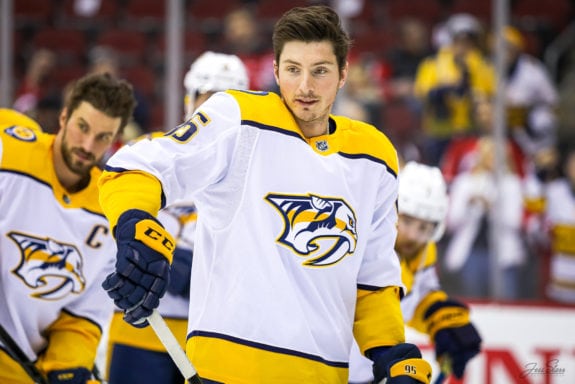
Those two directions have vastly different impacts on the longer-term future of the Predators. Moving a player out like Ekholm, for example, would likely bring in at minimum a solid prospect and a first-round pick. On the flip side, moving out a player like Johansen would likely come either with retained salary on the Nashville end, or having to give up a valuable future piece in order to unload the full contract.
In that kind of situation, the Predators would then have a top-line hole to fill, and likely be out another player actually selected by Seattle (for example let’s say it’s Yakov Trenin). That would mean the Nashville lineup would be adding a few youthful players, but have the flexibility to be buyers in free agency. Unfortunately, free agency is not somewhere Nashville has had a lot of luck in the past, and overall across the league, the contracts signed here are more often than not ones that the team comes to regret. That means, that as much as cap flexibility is nice to have, it isn’t something that the Predators necessarily need to pay to get in the short or long term, seeing as none of their up and coming players figure to break the bank in the next number of years.
Staying the Course
The team was competitive enough to squeeze the 2021 Playoffs, and if they can make it through the expansion draft relatively unscathed (not losing a high-impact player), then they should be in the playoff picture next season as well. If the playoffs are the goal, then the team actually doesn’t need to make any big additions, and doesn’t need to shed cap for the 2021-22 season. However, the Predators should be aiming higher than just making the playoffs, and having a team built to win in the playoffs can be one that doesn’t have to contend for the Presidents’ Trophy, as this season has proven. The team needs a few more players that have that extra level for the playoffs, and those that can really control a game when there is less space on the ice. This means hard-working players that are both smart and skilled.
A month ago I dove into the Predators’ RFA situation, and the end result there was that all of the current RFAs could very reasonably be fit within next year’s available cap space. This would, however, mean that the organization does not have the flexibility to add much money entering next season, and would likely be close to capped out for the next number of years because of their long-term commitments and the flat cap. Additionally, without moving out any money, in two or three years the current core will still be on the cap at their current numbers (or more in the case of Forsberg & Ekholm) while the new wave of Alexandre Carrier, Eeli Tolvanen, and others will need new and more expensive deals.
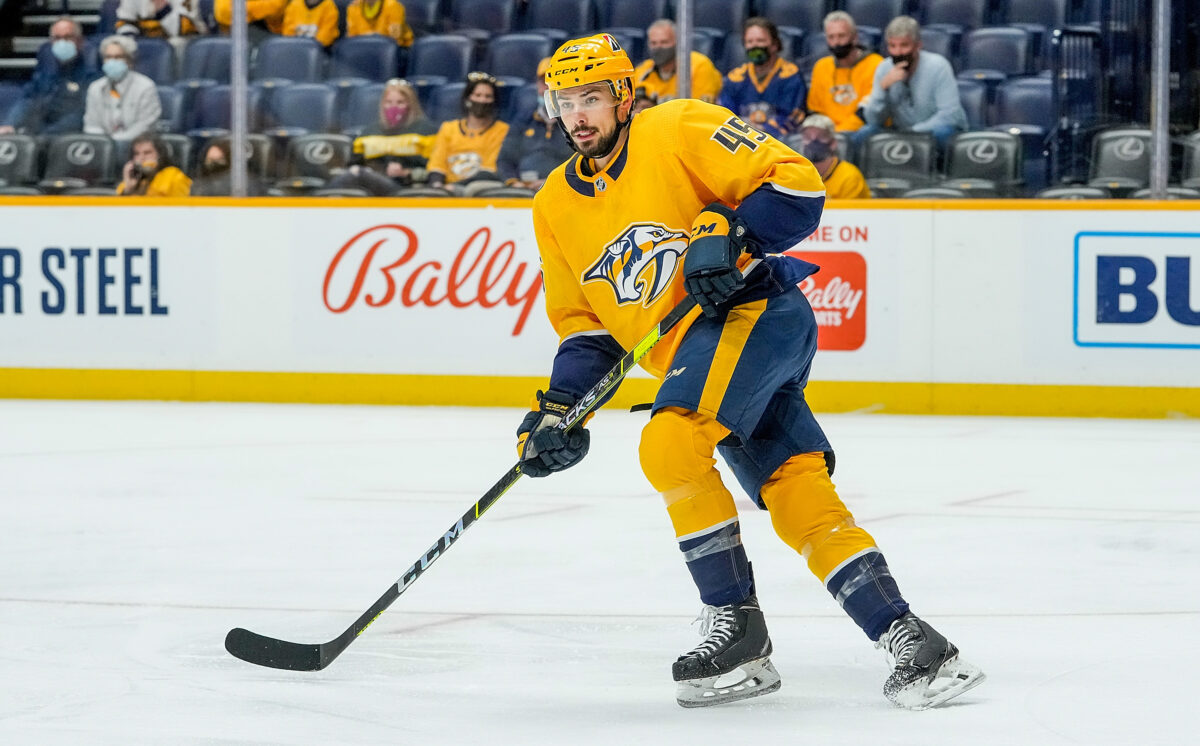
If the Predators go down this route, they are going to have to decide whether to let go of the younger talent that they can’t afford, or take pennies on the dollar for their older and more expensive players in order to make ends meet. Neither option is a good one, and it means that one way or another, the Predators’ management group should be looking to address this sooner rather than later.
For the future outlook, let’s assume three things: 1) that Arvidsson’s $4.25 million cap hit is replaced by Granlund for the next three years; 2) that the numbers in my RFA article linked above are on track; and 3) that the estimates for Forsberg and Ekholm will be close too. From that point, if we dive into the numbers, we can then pencil in the Predators at about an $80.5 million total cap hit for a full roster in 2022-23, and then over $86.5 million with one or two spots still left to fill in 2023-24. These numbers will fluctuate based on exactly how many years the current RFA class signs for, but the bottom line is that with the cap expected to stay flat through at least 2023, the numbers just don’t add up.
The Complicating Factor of the Cap Recapture Situation
As if things weren’t muddy enough for the Predators, there is one situation that would see the team go from being in a tight spot, to being behind the wheel of the proverbial 18-wheeler driving off a cliff. Yes, the dreaded “Cap Recapture Penalty” is coming up again relating to the Predators and their former captain Shea Weber.
Related: Shea Weber Is Still a Predators Fan Favorite
In July of 2012, Weber signed an offer sheet presented by the Philadelphia Flyers, and the Predators then matched it. The contract was for a cap hit of $7,857,143 for 14 years, for a total of $110 million on the deal. The contract was also front-loaded, meaning by 2016 when Weber was traded, there was still 71 percent of the years left on the contract while only 49 percent of the money was left to be paid out. In theory, that meant that Nashville had a huge economical advantage because of that, and it wasn’t until years later that the league closed the loophole and outlined the possible repercussions for this.
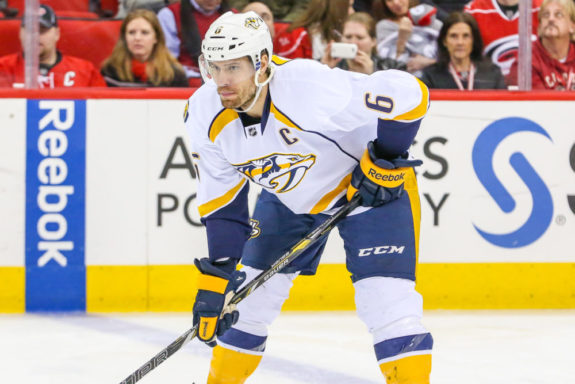
With Weber slowing down, and also reaching the Stanley Cup Final for the first time in his career, it is possible that he more seriously considers retirement. Short summers often lead to more injuries the next season, especially for big-body defencemen that are already in the 35-plus age group. On top of that, the last possible chance for Weber to play for Canada at the Winter Olympics will be coming up in 2022, so a retirement at the end of the 2022 season is very possible. Now, this is just speculation, as there have been no indications from Weber’s camp that he is looking at retirement, but the Predators’ brass has to be aware of the possibility, because if it happens at the wrong time, the repercussions could be catastrophic.
Without boring you too much with the math details, it boils down to the fact that the Predators will be on the hook for a $5-8 million cap hit spanning multiple years if Weber was to retire anytime between this offseason, and the 2025 offseason. That’s a long time to have to be on your toes waiting for the other shoe to drop. In fact, the risk of that hit goes on as long as the current Johansen contract.
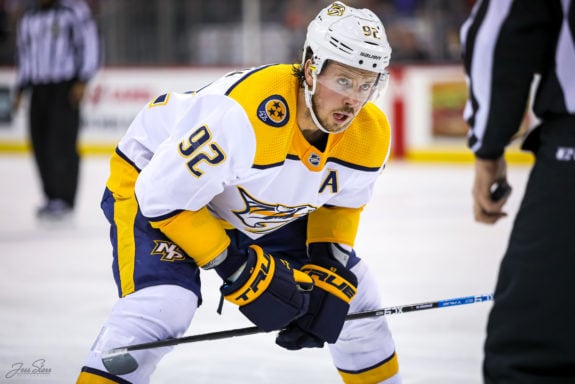
In the grand scheme of things, this is another reason to look very favourably upon options that free up cap space sooner rather than later. It is very possible that Weber doesn’t retire early, or when he is done playing, goes on long-term injured reserve (LTIR) until his contract expires. Many other stars have sat out the ends of their contracts while on LTIR, and doing so would mean that the recapture penalty would not come into play. Hopefully the Predators are still in Weber’s good books.
The Overall Salary Cap Outlook
Looking around the league, the Predators are certainly not alone in feeling a little claustrophobic because they are pressed tightly against the cap, and at the same time looking to maneuver extensions and additions to keep the team competitive. The salary cap was created to have the floor and the ceiling equidistant away from what the average team would be spending. However, in 2020-21, the median cap hit was $81.1 million by the Boston Bruins, a mere $400k away from the ceiling, and a whopping $20.9 million above the salary cap floor. For the 2021-22 season, eight teams already have more than $70 million tied up, and that kind of spending extends both down the line for other teams, and into future seasons with the higher value players locked up on longer-term deals.
With it known that there will be a period of stagnancy in the salary cap numbers on top of the Seattle Kraken joining the league and adding an extra $81.5 million in available cap space, this is a pivotal time in the cap management for everyone around the league. However, the Predators especially need to take advantage of this time, as they have one too many large contracts, and this summer will be the best time to unload any one of them. Failing to do so now would create a cascading set of future issues that would likely culminate with the Predators in the middle of a full-on rebuild just as the league finances, and the salary cap, are looking up again.